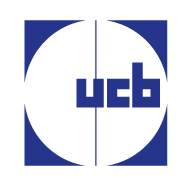

Discussion forum for Pharma Quality events, Regulatory Actions
Warning letters, 483s, Recalls, Import Alerts, Audit observations

Warning letters, 483s, Recalls, Import Alerts, Audit observations





USFDA 483 to UCB Belgium cites fundamental gaps in document control – uncontrolled forms for inprocess samples, cleaning activity, GMP document in shredded material. The observations show the importance of well established document control procedures, ensuring no uncontrolled piece of papers in GMP areas and operations.
Inadequate control of forms used for recording GMP activities.
The issue and concern with documenting GMP and Quality data in uncontrolled forms, Log Books, loose papers etc. is that such documents can be replaced, discarded without any traceability, which means integrity of the data is not reliable. Uncontrolled document are those whose source, version, history cannot be traced. All documents in GMP operations – Formats, Log sheets / log books, Records (Batch record, Analytical record and so on..), Work instructions including displays, Procedures, Reports (investigation reports, Trend reports, reviews..) all should be controlled. There shall be no piece of uncontrolled paper in GMP areas. This is to ensure that any replacements / destructions can be traced, authenticity of the data and document can be verified.
A Document control system should ensure:
(ICH Q7A, Section 6, guideline defines requirements for control of documents and records in detail; please refer and ensure compliance).
Procedures should also be established for shredding, destruction and scrapping of GMP documents. It should be a controlled activity with authorisation by Quality unit and usage logbooks for paper shredders. Various citing on finding of GMP documents in scrap, reinforce the point that if an auditor picks up such a piece of document from anywhere in the site and challenge, the Quality unit and the Firm should be able to trace and explain the shredded / scrapped piece of document and why it was scrapped.
Document Control and documentation management is fundamental to GMP. Gaps in the document control procedures and practices lead to citing for lapses in Data Integrity.
Firms and sites may well review and make an assessment whether there are practices of uncontrolled documents in GMP areas (for e.g. as cited in these observations or other similar issues) In their sites. If so, address the same by establishing comprehensive Document Control procedures, as discussed above.
But if lapses were observed during the assessment, enhancing the Document Control procedures alone is not sufficient. In areas of operations and activities where uncontrolled GMP documentations were practiced, review whether there are alternate checks and balances which can support the integrity of activities performed. For example, If in process samples were documented in uncontrolled sheets, whether the corresponding intermediate and finished product samples are handled with appropriate controls. And if there are no discrepancies, this can support the integrity of activity performed and there was no quality impact. Such comprehensive assessment, and enhancement of the Document Control procedures, can help give confidence to the auditors / agency that the Firm evaluated assessed the gaps in Document Control procedures and practices and their impact, implemented appropriate corrective measures (CAPAs) and the Firm Is in control.
Leave a Comment
You must be logged in to post a comment.